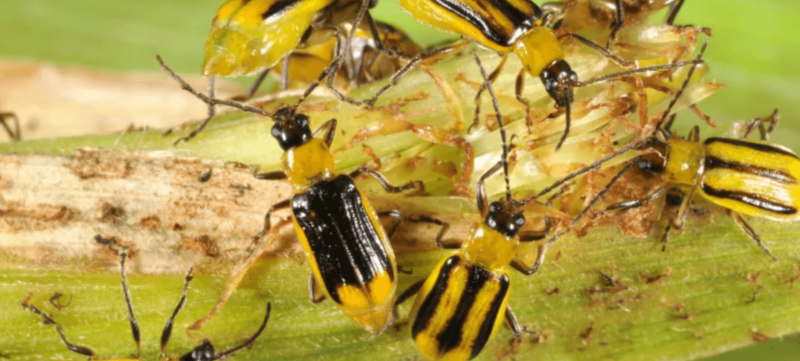Need to manage a pest problem? Luckily, there are many ways to do that! From physical to biological and chemical controls, plant pathologist Steve Savage covers an array of pest management strategies farmers can use when an issue arises.
Podcast: Play in new window | Download
Subscribe: RSS
Remember when Bill Murray’s character uttered, “Anything different is good” in the classic movie Groundhog Day? Well, that idea can also be applied to farming and pest control. There are many different ways to farm and many different methods, tools and strategies that farmers can use to control the pests and diseases that prey upon our food.
This is not unlike the journey Murray’s character, Phil, takes in the movie, hilariously trying to make it out of the time loop he finds himself in and to make it to tomorrow. Groundhog Day is a great example of finding different ways to solve a problem, and recently there have been a crop of these types of movies and TV shows making their way to our screens, like Happy Death Day and Russian Doll. They are great reminders that ingenuity and original thinking can help you out of many jams!
If the jam you find yourself in concerns bugs, then you are typically quite open to a few options that involve killing the invaders or hiring an expert service to do the job. If your house or apartment is overrun with ants, roaches or fleas, you are probably going to do something about it! If you are unfortunate enough to get a bedbug infestation, you may have to consider some pretty extreme solutions to eliminate that threat. In an earlier podcast, I described the recently introduced Brown Marmorated Stink Bug, a pest that likes to migrate in the thousands to the inside of houses in the weeks leading up to winter. In these situations, killing something makes sense.
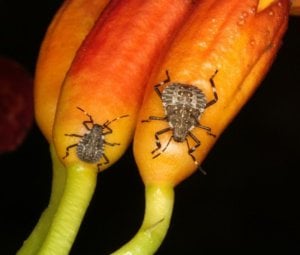
Farmers often find that their crops are being attacked by bugs of various types, and they too need to do something about it. But there are actually lots of different options for pest control on the farm.
Physical methods
Perhaps the most familiar way to kill a bug is using physical tools like a fly swatter or a shoe. That isn’t a practical approach for an entire farmed field, but there are physical approaches used by farmers. For instance, California strawberry growers have found that by running a big vacuum machine over the crop rows, they can keep the population of Lygus bugs in check. That means that you and I will be able to buy strawberries that are not marked and deformed by the feeding of this large, true bug. Homeowners can also buy special bug vacuums that deal with those stinkbugs if they invade your house (apparently you shouldn’t just squish them because of the “stink” part).

Perhaps the simplest kind of physical control is a barrier. For something like a greenhouse for growing vegetable crops, screens are a simple and practical way to keep out bugs, just as they are for our homes.
Traps
Many homeowners from areas where there are lots of mosquitoes use a “bug zapper” to protect themselves while on the porch. The mosquitoes are attracted to a light or source of CO2, then an electrical discharge kills them. In agriculture, the traps might just have some sort of juice with a smell that attracts the bugs, or they might be loaded with an insect sex pheromone that lures the pest into a container from which it can’t escape. Other traps, meanwhile, encourage the bug to land on a sticky surface. Traps used in farming are usually designed to get a feel for what kind of pests will show up in big numbers, not to actually achieve pest control solely through trapping.
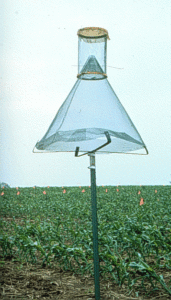
Drowning
Another way to kill a bug is to drown it. Insects and mites breathe in and out through small openings all over their body called spiracles. Particularly for insects that are small and soft-bodied, drowning with water and a surfactant, or insecticidal soap, is effective. You can actually make such a spray yourself using a bit of dishwashing detergent in water. For this approach to work, the spray has to completely cover the entire plant, including the underside of the leaves, which is often where the pests are feeding. If you have white flies or aphids or mealy bugs in your garden or landscape, this can be a good approach. EPA registered soaps of this nature are commonly used in farming.
A similar drowning strategy can be implemented using various oils. Particularly in organic farming, oils derived from plants or from petroleum (mineral oil), are used extensively for the control of certain insects and mites.
Interference With Reproduction
Most insect pests start each new season with a relatively small population that has successfully overwintered. The pest only becomes a serious threat to crops if it can greatly increase its numbers over several generations. So, there are a number of pest control strategies that involve disrupting the bug’s reproduction.
In some cases, there are pest species that can only survive on one specific crop and not on any local weeds. In that scenario, it is possible for the farmers to organize a “crop-free period” in a given region so there is no way for the pest to keep going except maybe to re-enter from a distant point.
There are certain crop protection chemicals called insect growth regulators which don’t actually kill the bug, but keep it from going through its various larval stages and thereby preventing it from reaching the reproductive, adult stage. There is another method called pheromone confusion, where many small emitters loaded with the insect-specific pheromones are spread around an orchard or vineyard so that the male insects are diverted and don’t find a real mate.
There is another strategy called sterile male release, in which pest insects are raised in captivity and sterilized (usually by exposure to gamma radiation). If large numbers of these males are released, they mate with the wild females and the result is far fewer bug babies. This approach has frequently been used for mosquito control to protect people and when there is a new, invasive crop pest, such as when the Mediterranean Fruit Fly became a threat to California crops.
Several years ago, researchers at Oxford University in the UK used a genetic engineering approach to raise a population of a pest in captivity and then guarantee there were only sterile males left for a release. These males are more competitive for breeding than those partially compromised by the radiation exposure. This method has been quite successful for dealing with Zika Virus in various areas around the world, but sadly it is used far less than it could be due to GMO-phobia. It would be an ideal solution for a new invasive pest like the spotted winged drosophila, a fruit fly that has recently become a big problem for many fruit crops in the Americas.
Repellents
Another pest control strategy that can work in certain cases is to simply repel the insect but not actually kill it. For instance, there are reflective plastic mulches that make some insects avoid the fields where they are used.
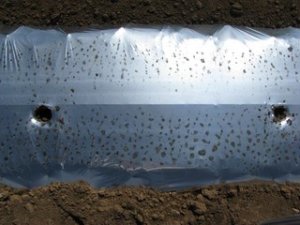
DEET, for example, is a familiar chemical repellent that humans use on our skin to protect us from mosquitoes and ticks. There are also chemical repellents used in agriculture. Some just drive the pest away, while others are particularly good at convincing the female insect to avoid laying eggs on the sprayed crop.
Biocontrol
There are also approaches to bug control based on biological agents. This method leans heavily on the “survival of the fittest” theme and is tinged with a bit of The Hunger Games flavor. There are bugs that eat other bugs, like the familiar Lady Bugs or Lace Wing. These and other predators can often keep pest bug populations in check. There are also things called “parasitoids,” often tiny wasps that lay their eggs in the pest insect so that later their larvae can hatch out and eat their host.
When a new pest arrives in an area, it often doesn’t have many of these natural enemies. The Glassy Winged Sharpshooter was a new pest introduced into California about 10 years ago. It is particularly troublesome because it spreads a bacterium that can kill grapes. Another new pest is the Asian Citrus Psyllid that spreads the HLB bacterial disease that kills citrus trees.

For both of these pests, California researchers have explored the parts of the world they came from originally and found some of their natural enemies. After doing the homework to make sure these insects wouldn’t become pests themselves, scientists brought the good candidates to California to start building new populations of these beneficials to make it easier for California farmers to deal with new invasive pests.
There are also predatory mites that eat crop-damaging mites. There are companies that raise these tiny creatures so they can be gently spread throughout a field. That spreading job has usually been done by hand, but lately people have been experimenting with small, low flying drones to do that job.
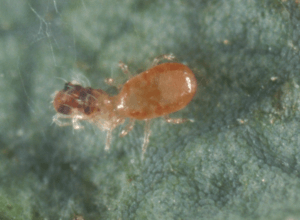
There are also bio-control strategies based on certain fungi and certain nematodes that specifically attack bugs. These can be raised in captivity and then introduced into the field to attack the pest.
Toxins
The last big category of “ways to kill a bug” are chemicals toxic to the pest—substances we usually call insecticides. But even within this category, there are many different mechanisms by which the insect is killed. Insecticides weren’t invented by people. In fact, many plants produce their own chemicals for the purpose of defending themselves against pests. In some cases, it is possible to extract such chemicals from one plant species and use them as “natural product” spray on other crops. There are also other organisms like bacteria, fungi and actinomycetes that naturally produce insecticidal chemicals as they grow. These can be fermented in the lab and then formulated into an agricultural pest spray.
Some very old pesticides, based on things like sulfur or copper, do what they do in a rather non-specific way, disrupting many functions at once. This usually takes substantial doses. Modern insecticides generally require far smaller doses because they act by inhibiting some particular enzyme, an enzyme that is critical for the pest to survive.
Some of the earliest synthetic chemical pesticides, called organophosphates or carbamates, inhibit an enzyme called Choline esterase that plays a key role in neural function in both insects and animals. It was possible to use these products with relative safety because the dose needed to kill the bug was much lower than the amount needed to injure larger animals or people. Still, chronic exposure to these CEI compounds, or choline esterase inhibitors, could eventually cause trouble.
So over the last few decades, the use of CEIs has declined dramatically as new pest control options have been discovered. The best part about these new generations of insecticides is that they have been designed to specifically inhibit enzymes that only occur in insects and not in animals.
The classic example of toxin specificity comes with another example of “biocontrol.” It’s based on a particular soil dwelling bacterium called Bacillus thuriengensis – usually know as Bt. Different subspecies and strains of this bacterium make unique proteins that are specifically toxic to just a certain subset of pests. When the protein gets into the right insect’s gut, it is partially digested and a part of it can very specifically bind with and disrupt the bug’s gut lining, eventually killing the pest. One type of Bt only affects caterpillars. Another only affects the larval stages of beetles. Another type only works on things like flies and mosquitoes. These bacteria can be brewed up in a fermentation tank, dried and sprayed on crops to control insects, but with minimal disruption to beneficial insects because of the selectivity of the toxin. The bacterium does not have to be alive or active, it is really just there for its protein toxin. Bt sprays like this have been used in agriculture since the 1960s, but the protein is not very stable in sunlight. So it has to be applied over and over again.
Since the mid-1990s, there have been several genetically engineered crops in which the bacterial gene for the protein toxin is inserted into the plant’s genome so that it makes its own Bt toxin protein. These crops have been extremely attractive to farmers, but only a small subset of the possible uses have been commercialized because of anti-GMO fears and the related brand protectionism in the food industry.
As I mentioned before, most modern, synthetic insecticides have been designed to inhibit enzymes that are not found in animals. There is an organization called IRAC, the Insecticide Resistance Action Committee, and they keep track of how the various classes of insecticides work, and which enzymes they inhibit. This is important because farmers need to mix and match those tools so that they don’t drive the pest to evolve resistance to those insecticides.
The more strategies a farmer can combine or use in sequence, the less chance there is that the pest will evolve resistance to any of the specific tools. This sort of resiliency through diversity is central to sustainable pest management programs – and the continued ability of farmers to produce the food we all eat. So, it’s a good thing that there’s more than one way to kill a bug.
Steve Savage is a plant pathologist and senior contributor to the GLP. Follow him on Twitter @grapedoc. The Pop Agriculture podcast is available for listening or subscription on iTunes and Google Podcasts.

